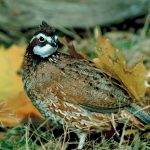Sharptails, Huns, and Prairie Chickens Forecast 2016: The Traveling Wingshooter
The sleepers may be the destinations for prairie grouse and Huns in 2016. That prognosis stems from continued dismal sharp-tailed grouse production in North Dakota, the premier sharptail destination in many years past. Fresh off a season that a good friend of mine, a Bismarck native, refers to the absolute worst year in his 40-plus years of hunting sharptails in NoDak, the 2016 lek surveys revealed another six percent decline for sharptails, according Aaron Robinson, North Dakota Game & Fish. In a word, bleak.
South Dakota will be better, according to Runia: “Spring lek counts showed increases in both sharp-tailed grouse and greater prairie chickens. Both species are at or above their 10-year averages. Range conditions were in excellent condition across the prairie grouse stronghold of central and western South Dakota during the early nesting season. However, drought conditions could reduce chick survival and impact hunting success this fall. Central South Dakota has been less impacted by drought than the west.”
My take: Hit central South Dakota and take advantage of the sleeper that is greater prairie chicken hunting in native prairie habitats such as the Fort Pierre National Grasslands.
Hungarian partridge are the anomaly when it comes to weather and habitat conditions. I learned the hard way that warm, dry springs in the northern Great Plains – the same springs that often don’t produce pheasants – can yield staggering numbers of Huns. Huns are rarely surveyed in the U.S. so the intel of where to specifically target them is about half-anecdotal and half-hunch. I’m playing the hunch this year due to successive warm and dry May/June periods springs on the Northern Plains. Eastern Montana and western North Dakota could offer very good hunting for this tasty gamebird.





